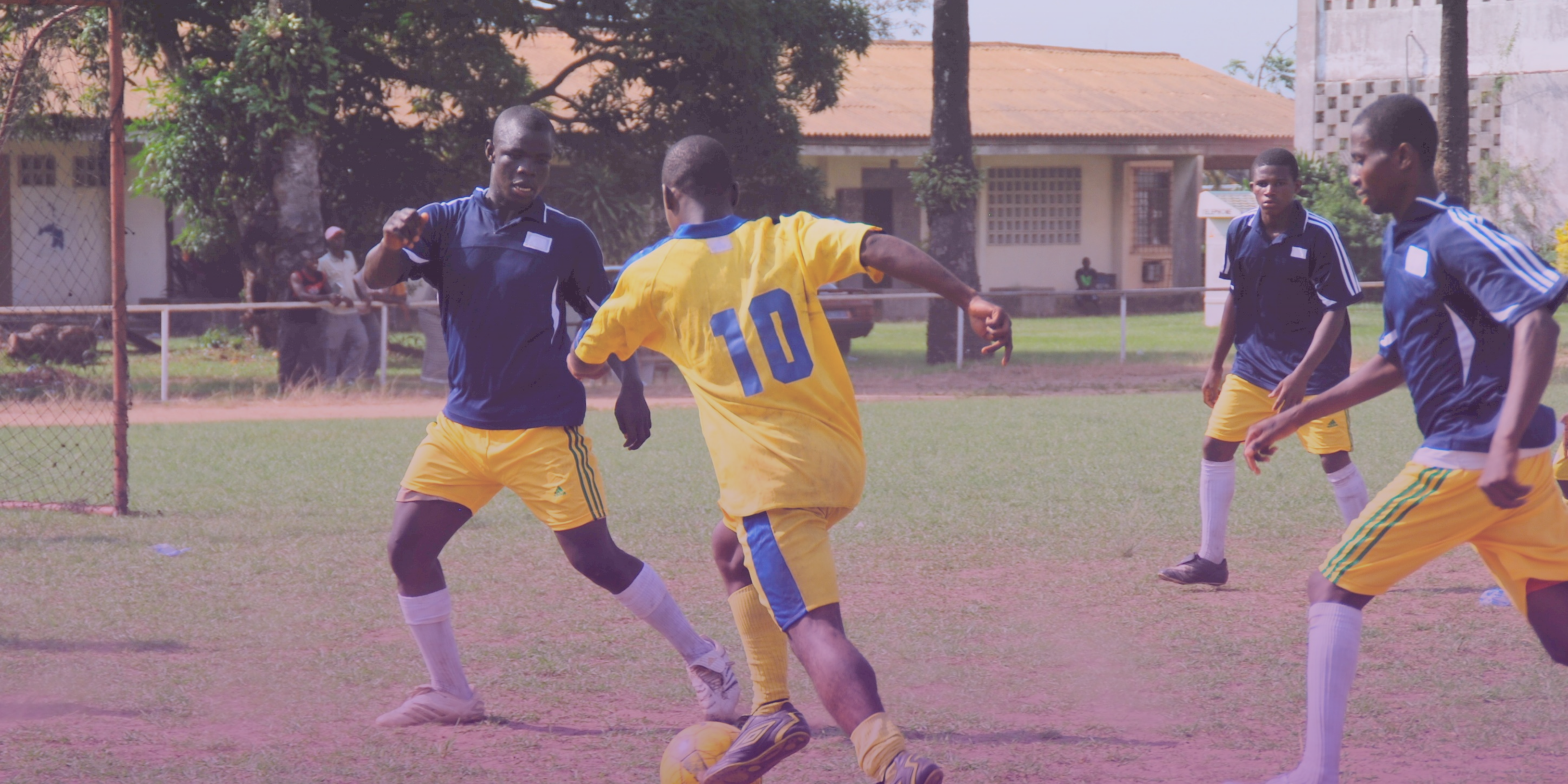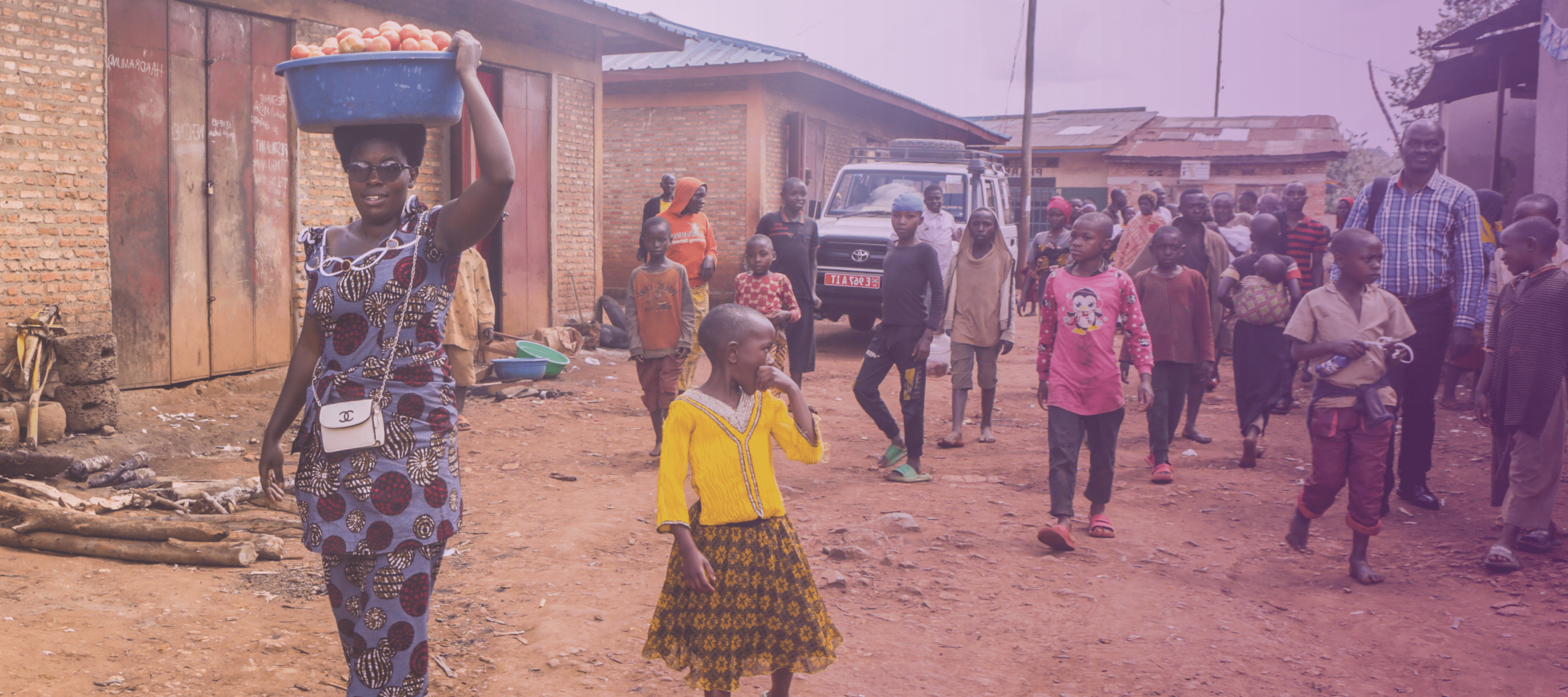
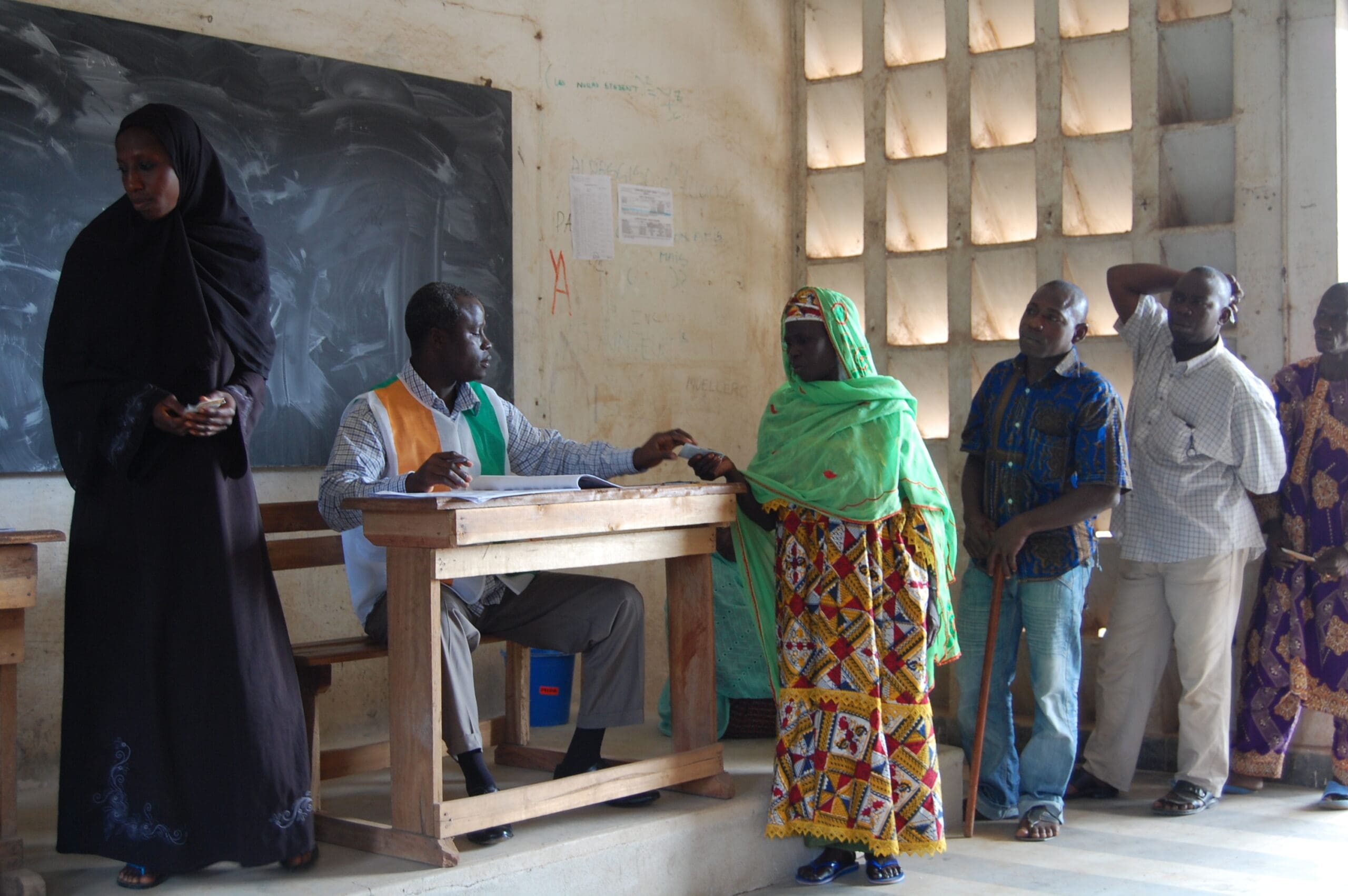
The Plan is a 3-scope strategy to:
- Drive systemic change in 10 of the world’s most consequential conflicts
- Popularize the Common Ground Approach
- Advocate for more effective support for locally-led peacebuilding
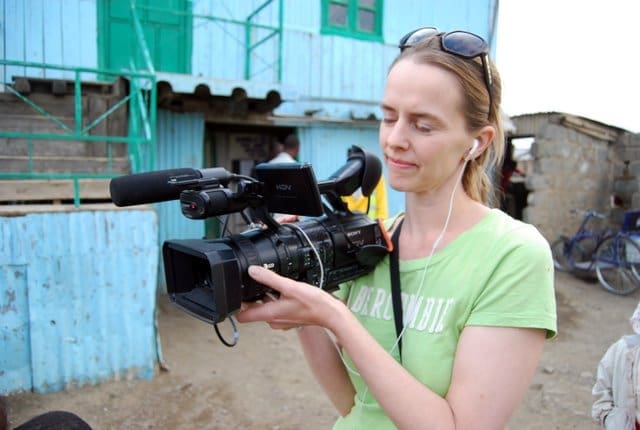
With profound implications on:
- First-ever criteria for where we work
- First-ever unified Theory of Change
- Reforms and investments toward operational excellence
- Executive team structure
- Board composition
01
Preparation:
18 months in 2016-17
02
People involved:
200+ staff, partners, policy-makers, donors, thought leaders
03
Tools used:
Internal and external interviews, focus groups, retreats, program evaluation
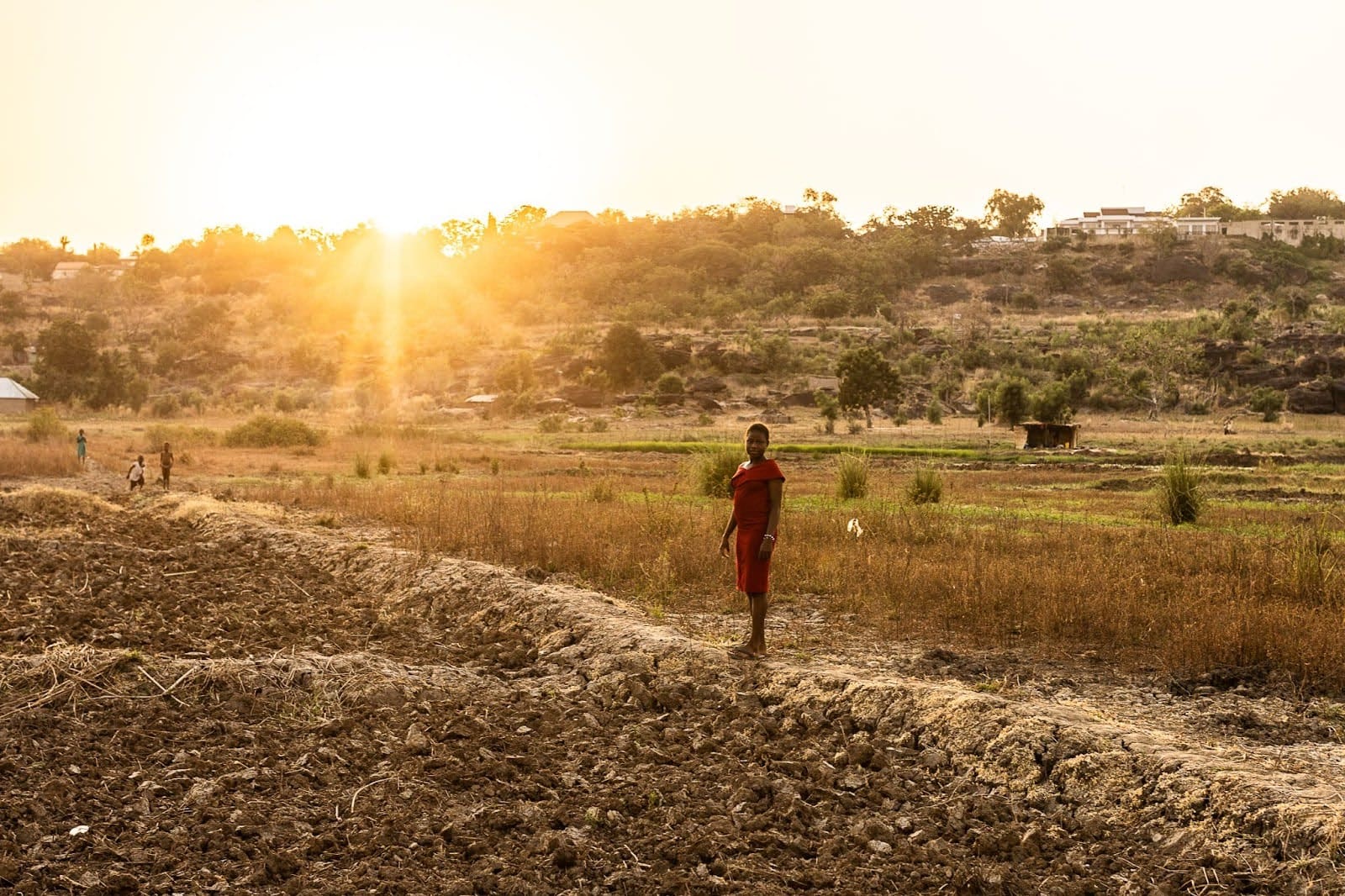
1. SCAN THE LANDSCAPE
Conflicts are changing. War deaths and other forms of violence have been decreasing for decades. Other phenomena, like global refugee crises and civil wars, are on the rise.
Our response must change, too. The institutions and mechanisms put in place after World War II have made the world more peaceful over the last 70 years. However, as our understanding of how violent conflict emerges and presents itself evolves, they are becoming inadequate. A new type of action needs to complement their work; we call it citizen-led peacebuilding.
We are at the forefront of that change. That’s why we set out to develop a new, 10-year Strategic Plan.
2. PLOT THE COURSE
Every journey needs a direction. Ours is based on the Common Ground Approach and a unified Theory of Change. The Common Ground Approach is a methodology to transform how we respond to conflict, away from confrontation and violence and toward collaboration.
The Common Ground Approach
-
Hope:
We believe that change is possible even in the worst circumstances for those who seek it.
Lead from within:
We believe that those closest to a conflict are best equipped to drive change.
Be creative:
Embrace innovative, culturally relevant programming that enables new breakthroughs.
Be inclusive:
Everyone who has a stake in a conflict should have their voices heard.
Start with people…
The human journey of transformation is at the center of all change.
… and end with systems:
Transform specific relationships that can catalyze systemic changes.
Commit long-term:
Change takes time, so we make long-term commitments to the places where we work.
Focus on shared interests:
Identify common goals and build opportunities for collaboration around them.
Tackle root causes:
Focus on addressing the origins, not just the visible symptoms, of conflict.
Be practical:
Look for concrete avenues for collaboration between parties to the conflict.
Adapt:
Adjust programs to evolving conflict dynamics so that they stay relevant.
-
Collaboration:
Divided groups work together to achieve their shared goals.
Trust:
People establish relationships of trust across ethnic, religious, political, and social divides.
-
Enduring change:
Individuals and groups recognize the benefits of collaboration and seek to replicate it, even without outside support.
Decreased appeal of violence:
Individuals and groups shift away from resorting to violence as a way to deal with conflict.
3. WHAT LIES BEYOND THE HORIZON
Our Stategic Plan is divided into three scopes
New Territories (Scope I)
We will move past country-based planning, define our engagement by the borders of the conflicts we tackle, and focus on addressing the world’s most consequential conflicts. Three observations shaped our thinking:
01
The most devastating conflicts expand beyond the borders of nations;
02
The highest pursuit of our mission compels us to work long-term in a limited number of these conflicts;
03
If we go beyond the country program model, we will have the flexibility to address the root causes of conflict wherever they are.
Theory of Change
We also codified our first unified Theory of Change. It explains how and why we pursue enduring change in three different arenas: institutions, social norms, and markets. It also establishes our ultimate goal: building safe, healthy, just societies.
Safe, Healthy, Just Societies
New Opportunities (Scope II)
We will invest in initiatives to popularize citizen-led peacebuilding as humanity’s most effective way of dealing with violent conflict. We identified three opportunities toward this goal:
01
Joint campaigns with our peers to build a global movement;
02
Strategic partnerships outside our sector to popularize our methodology, the Common Ground Approach;
03
Expanded investment in virtual exchange, social gaming, and other tools in the digital space.
New Voices (Scope III)
We will invest in outreach and advocacy to inform policy, generate resources, and cultivate support for peacebuilding. We aim for four outcomes:
Support for civilian-led peace efforts;
Work with the private sector, governments, and other institutions to transform their ability to mitigate conflict;
Make the case for the peacebuilding field among policymakers and the public;
Fix the peacebuilding funding ecosystem.
4. TO-DOS
Past
- Run successful programs
- Design and implement programs at a country level
- Adopt a diverse set of innovative and experimental tactics
- Focus only on project execution
- Build programs with available funding
- Operate on revenue model that is almost entirely reliant on public sector grants
- Make systems investments to meet minimum operational standards
- Strategize only within program teams
Future
- Pursue systemic change
- Define engagement by the borders of the conflict, not the nation-state
- Innovate, experiment, and systematically apply proven methods
- Leverage program experience to improve peacebuilding practice, policy, and credibility
- Influence the funding ecosystem to support quality peacebuilding
- Achieve a diversified revenue portfolio with substantial private sector philanthropy and investment
- Build agile global operations to support effective local peacebuilding
- Set strategy and track progress at every level of the organization
5. ROUTE TO 2028
We will invest in outreach and advocacy to inform policy, generate resources, and cultivate support for peacebuilding.
- Consolidate transition plans toward new geographies
- Develop implementation plans for Scopes II and III
- Roll out the Enduring Change Lab toolkit
- Restructure support units into a Global Services Team
- Establish Board development strategy
- Shift program portfolio toward priority geographies
- Build replicable private philanthropic fundraising program
- Develop advocacy, outreach, and communications to advance Scopes II and III
- Establish strategic partnerships to popularize the Common Ground Approach
- Complete implementation of Board development strategy
- Deploy Global Services Team functions optimally across local, regional, and headquarters offices
- Develop robust programming in each of the priority geographies
- Offer program processes and methods to external partners
- Popularize the Common Ground Approach
- Achieve new levels of visibility and credibility for the peacebuilding field
- Sustain excellent operational performance
